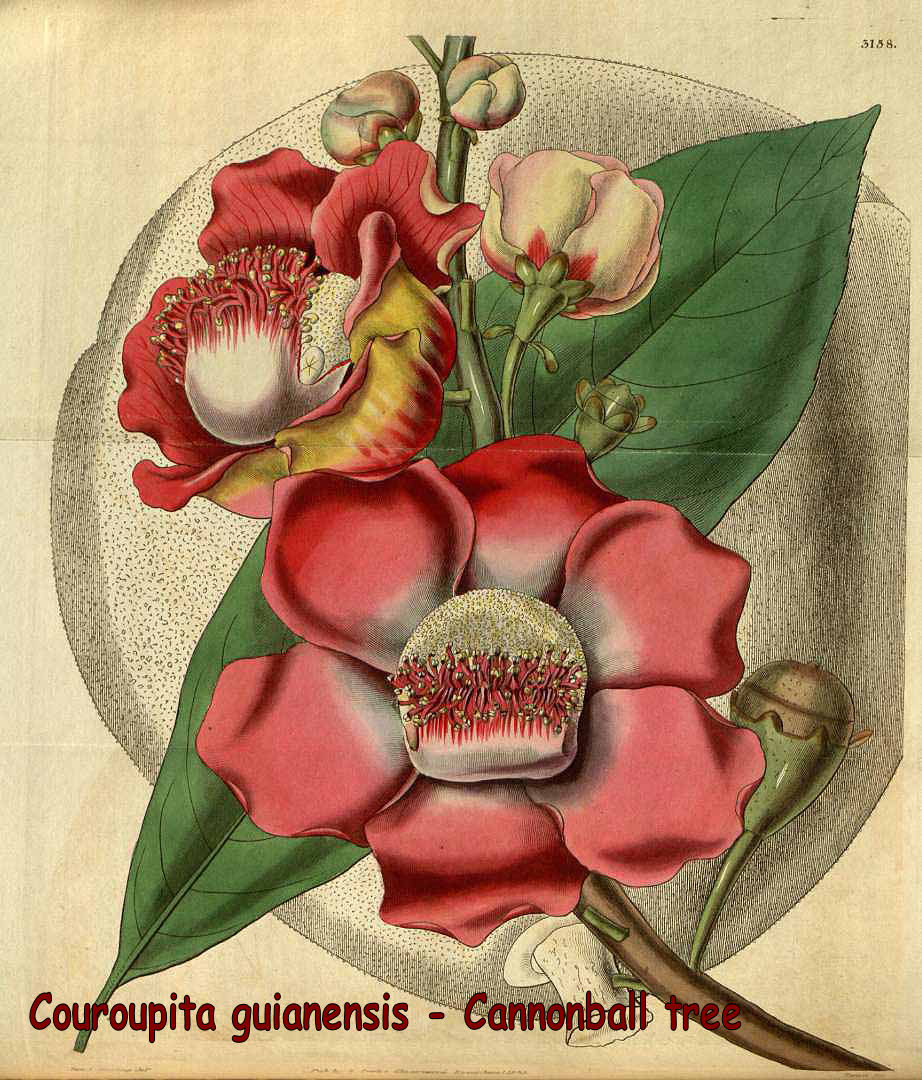COUROUPITA GUIANENSIS - CANNONBALL TREE.
 Common name
Common name
Cannonball tree, boskalebas, coco de mono, abricó de macaco, castanha de macaco, cuia de macaco, macacarecuia,
sala tree, kanonenkugelbaum.
Family
Lecythidaceae (Brazil-nut family).
Overview
A large deciduous tropical tree, 90' tall and indigenous to the Amazon rainforest.
The leaves, up to 6" long, are simple with serrate margin; it flowers in racemes; the yellow, reddish and pink flowers are stunningly
fragrant.
These are large 3" to 5" waxy aromatic smelling, pink and dark-red flowers, growing directly on the bark of the trunk (cauliflory).
Pollination is done by bees and bats.
The tree bears, also directly on the trunk and main branches, large globose woody fruits; they look like big rusty cannonballs hanging in
clusters, like balls on a string.
The fruit contains small seeds in a white, unpleasant smelling edible jelly, which are exposed when
the upper half of the fruit goes off like a cover.
The long dangling fruity branches give the tree an
unkempt appearance.
The hard shells are used to make containers and utensils.
Medicinal applications
The fruit pulp, bark and flowers are used for medicinal applications and have antimicrobial- and fungal
activity.
Used to treat the common cold, stomachache, skin conditions and wounds.
Hardiness
USDA zone 9B - 11.
Propagation
Seeds.
Due to recalcitrant nature of the seeds, they have a short viable life, can not be dried well and
can not withstand low temperatures.
Culture
Full sun / partial shade, moist soil, needs high humidity.
Very susceptible to frost; plant in frost free locations.
|

